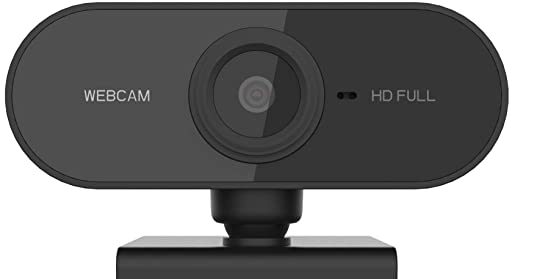Contents
Generally speaking, a proxy marriage is a wedding in which one or both of the individuals being united are not in the physical presence of the officiant. An absent party may be represented by another person (“proxy”).
Historically, some reasons for proxy marriage have included separation due to military service, imprisonment, or travel restrictions; or when a couple lives in a jurisdiction in which they cannot legally marry (e.g., Israel, where only religious marriages are allowed).
During COVID-19, proxy marriages have proliferated because lockdowns and international travel restrictions have made it harder for couples to get to the same place to marry. Since the pandemic began, our law firm has represented more clients with proxy marriages, including Utah marriages over Zoom.
Most U.S. states do not allow proxy marriages. But Utah does. The officiant must be present in the state of Utah, but the couple may reside and be physically present out of state, including abroad. The marriage license application can be signed electronically. The ceremony can be held over video conference. For more, see the website of the Clerk/Auditor of Utah County, Utah on “Getting Married via Video Conferencing in Utah.”

Is a Utah Virtual Wedding a “Proxy” Marriage?
The Immigration and Nationality Act clearly states that a marriage will not be recognized for immigration purposes if the parties who were not in each other’s physical presence when married, unless the marriage is later consummated:
– INA § 101(a)(35), 8 U.S.C. § 1101(a)(35)
Such marriages are referred to as “proxy marriages.”
The USCIS Policy Manual further clarifies that a “virtual marriage,” such as a Utah wedding over Zoom, where the parties are not in the physical presence of the officiant, is not valid for immigration purposes unless later consummated:
A virtual marriage is one that takes place remotely, usually through electronic media technology. The parties to the marriage may or may not be physically present together and are generally physically located in a place other than where the officiant to the ceremony is located.
For the marriage to be valid for immigration purposes, the parties also must consummate the marriage after the ceremony if the parties were not physically together for the ceremony.
–6 USCIS-PM B.6(B)(5) (Nov. 27, 2025).
See also Form I-130 Instructions 2 (Apr. 1, 2024) (a marriage is not valid for immigration purposes “if you and your spouse were not both physically present at the marriage ceremony, unless the marriage was consummated.”)
The requirement that the couple be physically present with the officiant is consistent with the underlying policy. The Immigration and Nationality Act has focused on proxy marriages since 1924, when the terms “wife” and “husband” were defined to exclude a spouse “by reason of a proxy or picture marriage.” The historic rationale for treating proxy marriages different than other marriages is the concern that the absent party is not able to directly manifest their voluntary to consent to the officiant. Before the advent of telephones and videoconferences, a party not physically present with the officiant was unable to communicate their current consent. More generally, Congress was concerned that proxy marriages may not be in good faith. See Kathryn Rae Edwards, Kicking the INA Out of Bed: Abolishing the Consummation Requirement for Proxy Marriages, 22 Hastings Women’s L.J. 55, 60-61 (2011); Kerry Abrams, Peaceful Penetration: Proxy Marriage, Same-Sex Marriage, and Recognition, 2011 Mich. St. L. Rev. 141.
The Consummation Requirement
According to the USCIS Policy Manual,
Acceptable evidence that the parties consummated a proxy marriage includes but is not limited to:
- The birth certificate of a child born to the couple, and listing both parents on the certificate, after the
ceremony took place;- Passport or airline tickets showing that the petitioner and alien beneficiary were in the same place at
the same time subsequent to the marriage ceremony; or- Evidence of residence together after the ceremony took place such as a joint lease or signed witness
affidavits.
–6 USCIS-PM B.6(B)(5) (Nov. 27, 2025)
Other evidence that the couple were in the same place at the same time may include admission stamps in passport(s), hotel bills, photos taken together, and a declaration (without graphic details) explaining the date and place the couple had “marital relations” after the marriage.
The consummation requirement for proxy marriages applies to all definitions of “spouse” under the Immigration and Nationality Act, such as:
- Naturalization as the “spouse” of a U.S. citizen;
- Qualification for a green card as the “spouse” of a U.S. citizen, a permanent resident, or a principal beneficiary of an immigrant petition.
- Qualification for a nonimmigrant visa as the “spouse” of certain nonimmigrants (e.g., F-1 student, J-1 exchange visitor, H-1 temporary worker, L-1 intracompany transferee).
Concluding Thoughts
Many persons have asked whether a proxy marriage will help them qualify for a B1/B2 (visitor for business or pleasure) visa. Being the spouse of a U.S. citizen is not a requirement for that visa. For more on proving the required nonimmigrant intent for that visa, see Entering the U.S. as a Visitor When Engaged or Married to a U.S. Citizen.
It has been our firm’s pleasure to successfully represent in U.S. immigration matters many couples, including same-sex couples, with proxy marriages under Utah law. Please feel free to contact us to discuss representation in your case.
Further Reading
Hong Kong LGBTQ couples seek love, recognition in mass wedding – Digital Journal (June 26, 2024)
Israel must recognize online marriages conducted via Utah, Supreme Court rules | The Times of Israel


Leave a Reply